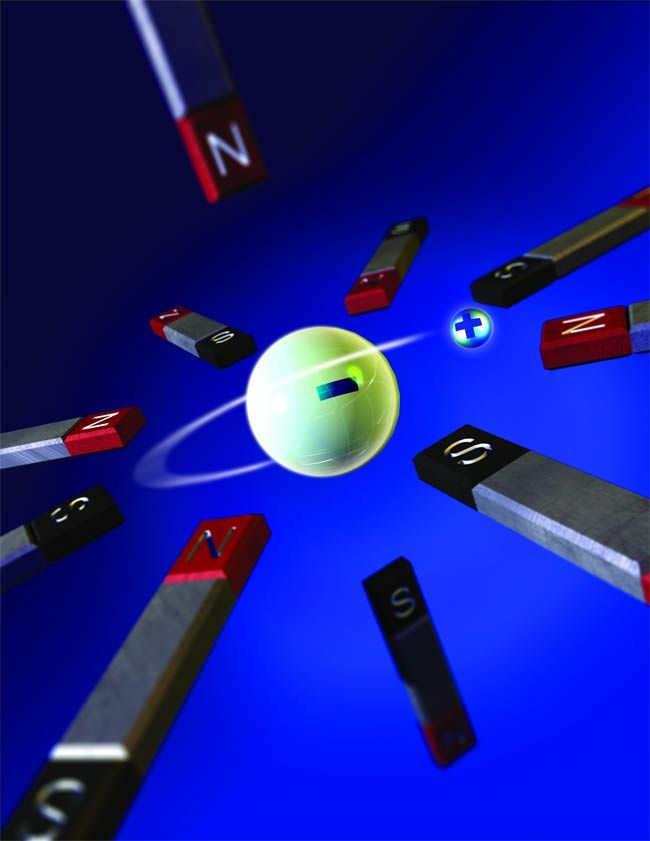Invention Traps Mysterious Antimatter

The trouble with studying antimatter is keeping it around without letting the odd substance come in contact with regular matter – because if that happens, the two will destroy each other in an explosive annihilation.
Now researchers at the European Organization for Nuclear Research (CERN) in Geneva have unveiled a new trap that they say can store a significant amount of antihydrogen atoms.
Mystery of the missing antimatter
Antimatter – or the lack of it – remains one of the biggest mysteries of science. Matter and its counterpart are identical except for having the opposite charge, and when the two meet, they destroy each other in powerful explosions.
During the Big Bang thought to have started our universe, matter and antimatter should have been produced in equal amounts, according to leading physics theories. However, we know that our world is made up almost entirely of matter: Antimatter seems to have disappeared.
To find out what has happened to it, scientists employ a range of methods to investigate whether a tiny difference in the properties of matter and antimatter could point toward an explanation.
Setting a trap
Sign up for the Live Science daily newsletter now
Get the world’s most fascinating discoveries delivered straight to your inbox.
One method is to take one of the simplest forms of matter, the hydrogen atom, which is made up of one proton and one electron, and check whether its antimatter counterpart, antihydrogen (consisting of an antiproton and a positron), behaves in the same way.
The challenge is to create antihydrogen atoms and keep them away from ordinary matter for long enough to study them. Scientists working on the ASACUSA (Atomic Spectroscopy and Collisions Using Slow Antiprotons) experiment at CERN say they have taken a breakthrough step toward that achievement.
The researchers created a trap called Cusp that uses a combination of magnetic fields to bring antiprotons and positrons together to form antihydrogen atoms. The trap then channels the antimatter atoms along a vacuum pipe where they can be studied in flight.
So far, only a few antihydrogen atoms have been produced in this way, but the experiment's ultimate goal is to produce enough to investigate their behavior in detail with the help of microwaves.
Nowhere to hide
ASACUSA's approach is complementary to that of another experiment at CERN called ALPHA (Antihydrogen Laser PHysics Apparatus), which reported on Nov. 17 that it had also trapped antihydrogen atoms briefly.
"With these alternative methods of producing and eventually studying antihydrogen, antimatter will not be able to hide its properties from us much longer," said ASACUSA team leader Yasunori Yamazaki of Japan's Riken research center. "There's still some way to go, but we're very happy to see how well this technique works."
CERN is the only laboratory in the world that operates a dedicated low-energy antiproton facility. As far back as 1995, the first nine atoms of antihydrogen were produced at CERN.
The findings are detailed today (Dec. 6) in the journal Physical Review Letters.
- Image Gallery: Behind the Scenes at a Huge U.S. Atom Smasher
- What is Antimatter?
- Twisted Physics: 7 Recent Mind-Blowing Findings










